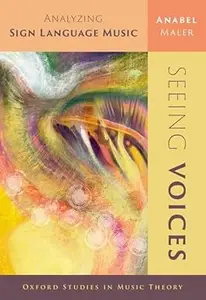
Free Download Seeing Voices: Analyzing Sign Language Music
by Anabel Maler
English | 2024 | ISBN: 0197601979 | 253 Pages | PDF | 9.3 MB
We often think of music in terms of sounds intentionally organized into patterns, but music performed in signed languages poses considerable challenges to this sound-based definition. Performances of sign language music are defined culturally as music, but they do not necessarily make sound their only-or even primary-mode of transmission. How can we analyze and understand sign language music? And what can sign language music tell us about how humans engage with music more broadly?
In Seeing Voices: Analyzing Sign Language Music, author Anabel Maler argues that music is best understood as culturally defined and intentionally organized movement, rather than organized sound. This re-definition of music means that sign language music, rather than being peripheral or marginal to histories and theories about music, is in fact central and crucial to our understanding of all musical expression and perception. Sign language music teaches us a great deal about how, when, and why movement becomes musical in a cultural context, and urges us to think about music as a multisensory experience that goes beyond the sense of hearing. Using a blend of tools from music theory, cognitive science, musicology, and ethnography, Maler presents the history of music in Deaf culture from the early nineteenth century and contextualizes contemporary Deaf music through ethnographic interviews with Deaf musicians. She also provides detailed analyses of a wide variety of genres of sign language music-showing how Deaf musicians create musical parameters like rhythm and melody through the movement of their bodies.
The book centers the musical experience and knowledge of Deaf persons, bringing the long and rich history of sign language music to the attention of music scholars and lovers, and challenges the notion that music is transmitted from the hearing to the Deaf. Finally, Maler proposes that members of the Deaf, DeafBlind, hard-of-hearing, and signing communities have a great deal to teach us about music. As she demonstrates, sign language music shows us that the fundamental elements of music such as vocal technique, entrainment, pulse, rhythm, meter, melody, meaning, and form can thrive in visual and tactile forms of music-making.










Leave a Reply
You must be logged in to post a comment.